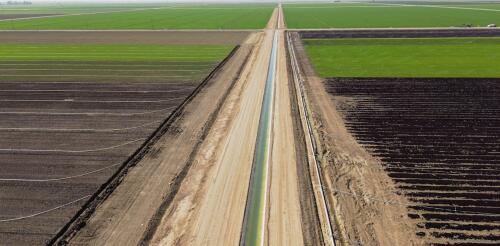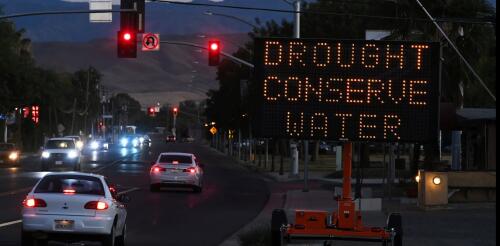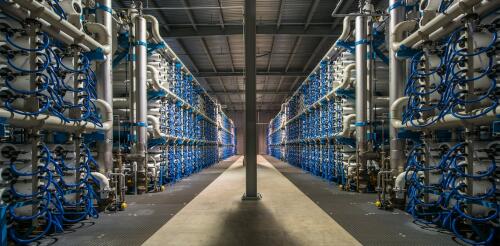Water conservation
Arizona is one of the fastest-growing states in the U.S., with an economy that offers many opportunities for workers and businesses. But it faces a daunting challenge: a water crisis that could seriously constrain its economic growth and vitality. A recent report that projected a roughly 4% shortfall in groundwater supplies in the Phoenix area over the next 100 years prompted the state to curtail new approval of groundwater-dependent residential development in some of the region’s fast-growing suburbs. Moreover, negotiations continue over dwindling supplies from the Colorado River, which historically supplied more than a third of the state’s water. The Colorado River’s watershed extends across seven U.S. states and into Mexico. Use of river water is governed by a compact negotiated in 1922. Center for Colorado River Studies, CC BY-ND As a partial solution, the Arizona Water Infras...
Arizona, California and Nevada have narrowly averted a regional water crisis by agreeing to reduce their use of Colorado River water over the next three years. This deal represents a temporary solution to a long-term crisis. Nonetheless, as a close observer of western water policy, I see it as an important win for the region. Seven western states – Colorado, Wyoming, Utah, New Mexico, Arizona, Nevada and California – and Mexico rely on water from the Colorado River for irrigation for 5.5 million acres and drinking water for 40 million people. Their shares are apportioned under a compact negotiated in 1922. We now know, thanks to tree-ring science, that its framers wildly overestimated how much water the river contained on a reliable basis. And climate change is making things worse. Some recent commentators have argued for revamping the compact. The lawyer in me shudders to think of the utter chaos that would ensue as states, tribes that were left out of the original...
A 23-year western drought has drastically shrunk the Colorado River, which provides water for drinking and irrigation for Wyoming, Colorado, Utah, New Mexico, Arizona, Nevada, California and two states in Mexico. Under a 1922 compact, these jurisdictions receive fixed allocations of water from the river – but now there’s not enough water to provide them. As states try to negotiate ways to share the decreasing flow, the U.S. Department of the Interior is considering cuts of up to 25% in allotments for California, Nevada and Arizona. The federal government can regulate these states’ water shares because they come mainly from Lake Mead, the largest U.S. reservoir, which was created when the Hoover Dam was built on the Colorado River near Las Vegas. These five articles from The Conversation’s archive explain what’s happening and what’s at stake in the Colorado River basin’s drought crisis. The Colorado River prov...
Even after heavy snow and rainfall in January, western states still face an ongoing drought risk that is likely to grow worse thanks to climate change. A whopping snowpack is good news, but it doesn’t reduce the need for long-term planning. Confronted with a shrinking supply of water for agriculture, industry and residential uses, water agencies have pursued different strategies to encourage water conservation. They have nudged customers to reduce water use, limited outdoor watering and offered incentives to rip out lawns. On the supply side, there are innovative ideas about using heavy rains to recharge groundwater. Basic economics teaches us that a higher price for water would encourage conservation. Up until now, however, concerns about harming low-income households have limited discussions about raising water prices to reduce demand. We know that it’s hard to pay more for essential goods such as food, energy and water, especially for lower-income households. R...
Coastal urban centers around the world are urgently looking for new, sustainable water sources as their local supplies become less reliable. In the U.S., the issue is especially pressing in California, which is coping with a record-setting, multidecadal drought. California Gov. Gavin Newsom recently released a US$8 billion plan for coping with a shrinking water supply. Along with water conservation, storage and recycling, it includes desalination of more seawater. Ocean desalination, which turns salt water into fresh, clean water, has an intuitive appeal as a water supply strategy for coastal cities. The raw supply of salt water is virtually unlimited and reliable. Ocean desalination is already a major water source in Israel and the United Arab Emirates. Cities in the Middle East, Australia, Mediterranean Europe, the U.S. Southwest and Australia also rely on it. There are more than 20 ocean desalination plants operating in California, plus a few in Florida. Many more plants acr...




